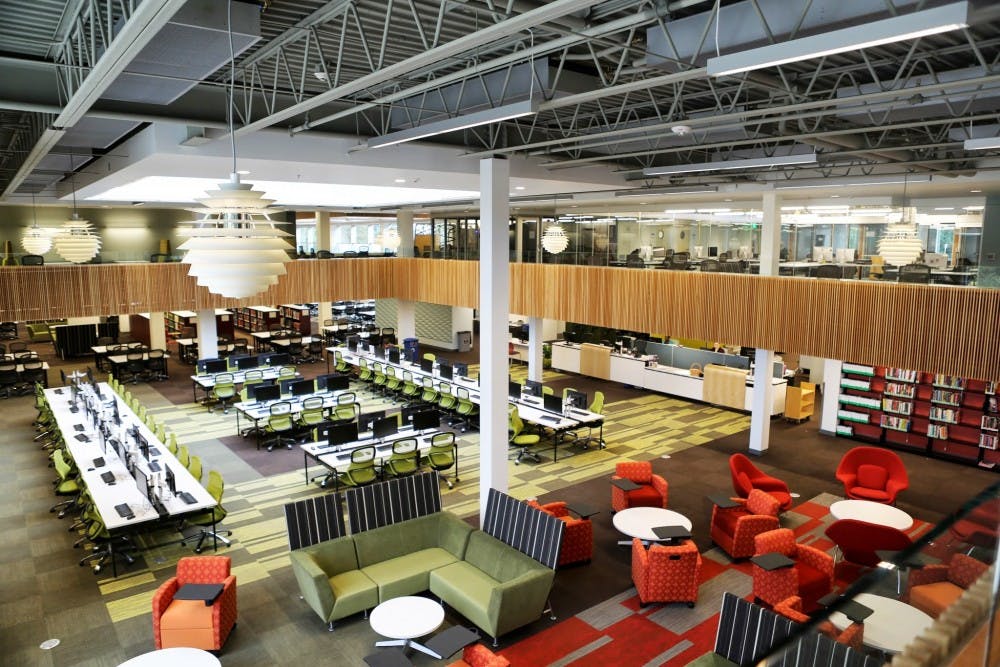by Rachel Rippetoe |
Five-year plans might rank in the top 10 list of a college student’s least favorite subjects. Where will you be in 2021? Grad school? Working in a big city? Traveling the world? It’s an exciting yet stressful concept.
However, it might be consoling for some students to know that their university goes through quite a similar process. UP has had a strategic system of five-year plans in place since 1992.
Yet, probably in the same spirit of anxiety we all feel, this grand plan in 1992 was put up on a shelf to collect dust. The administration would pick it up every five years, revise it and put it back on the shelf.
It wasn’t until 2011 that the plan was finally reworked from scratch by Provost Thomas Greene and Alan Timmins, vice president for financial affairs.
Now that UP’s hit its next five-year mark, Greene and Timmins have been working to improve on the strategic five-year plan system. They’re titling this pursuit “Vision 2020,” simply because “Vision 2021” (the year the plan will extend to) isn’t as catchy.
The process of creating this year’s plan is being driven by two core concepts left out of the last five-year plan: brevity and participation. The last plan was over 20 pages long. This year, the goal is it to keep it under eight pages.
There will also be listening sessions for members of the Pilot community to express their ideas for the plan. The 23 sessions started on Feb. 3 and will continue until Feb. 26.
The University’s Targeted Actions for the plan:
- Sustain superb undergraduate education while advancing relevant new programming.
- Expand rigorous, meaningful, self-sustaining graduate programs.
- Develop first-rate infrastructure, services and facilities.
- Infuse our entire community with a sense of multi-cultural opportunities and instruction.
- Enhance our Catholic character and enrich the expression of our faith.
All listening sessions are open to everyone in the UP community including students, faculty, staff, alumni and parents. However, several sessions were created to address specific issues including different educational departments, infrastructure, athletics and international and intercultural matters. The full list of listening sessions along with notes from each session can be found here.
By Friday of last week, over 500 community members had attended a listening session.
Other than an ASUP Senate meeting and a Student Affairs meeting addressing the plan, there are no specific sessions for students. However, Greene and Timmins said that staff and parent sessions often echo the voices of student concerns.
What are some of the main issues being brought up?:
- Infrastructure: Need for more classroom space and more parking space
- Better Wi-Fi
- Creating more diversity among faculty, both culturally and career-wise
- Creating a student center
- Hiring a sustainability coordinator to work in Waldschmidt, or creating a sustainability office
- Improving the tenure process for professors
- Managing the growing enrollment rates
- The improvement of wellness and mental health for students, faculty and staff, including increasing health service hours and staffing
- Competitive pay for faculty and staff
- Addressing internal communication issues among faculty, students and the administration
- Improving food services
- Making study abroad during the summer more affordable
- Bringing in more international students and providing different kinds of international experiences and events on campus
- Expanding the university’s online education
- Creating more religious space for non-Catholics
Targets Reached:
- Reduce the University’s use of energy (i.e., heat and electricity): Made energy upgrades at Shipstad, Kenna, Christie and Waldschmidt halls.
- Recycle other resources (i.e., food and paper): Compost and recycling bins set up in The Commons, Pilot House and, more recently, in Mehling Hall.
- Construct a recreation, health and wellness facility: Beauchamp Recreation & Wellness Center, completed in the fall of 2015.
- Transform the library into a shared learning commons that includes a learning lab, multimedia lab and a study lab: Clark Library was completed in 2013.
- Expand and create graduate programs that strengthen the points of distinction of UP’s mission and meet criteria for feasibility and sustainability: Created a non-profit master’s program, HESE (a higher education master’s degree) and replaced the engineering graduate program with a biomedical engineering program.
- Upgrade Buckley Center Auditorium
- Library will accommodate up to six smart classrooms, seating 40 students each.
- Provide faculty and staff salaries competitive with peer institutions.
- Create rigorous and high-quality online and hybrid graduate courses.
- Over 50 percent of students study abroad.
- Develop a program of national excellence in men’s basketball, similar to women’s soccer.








